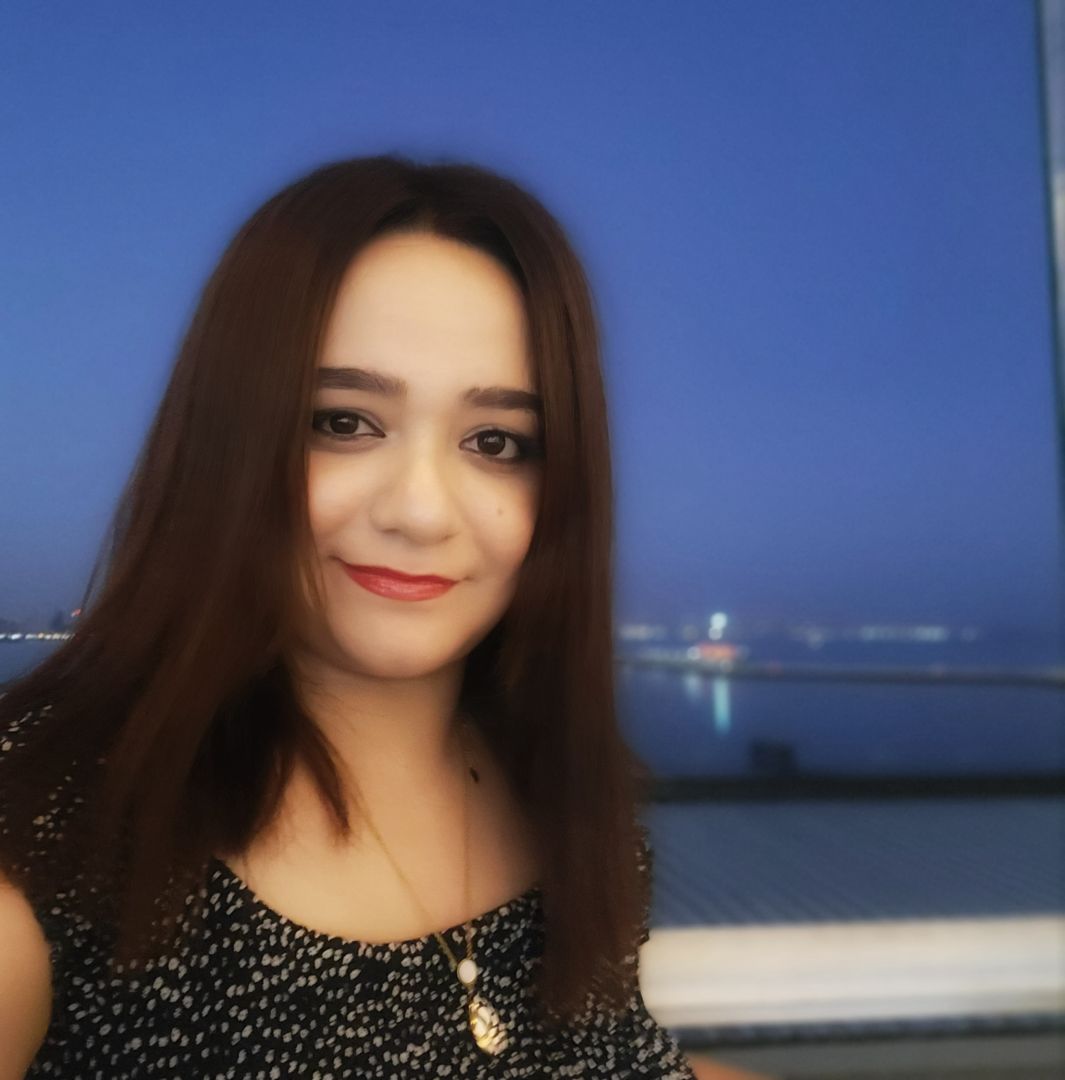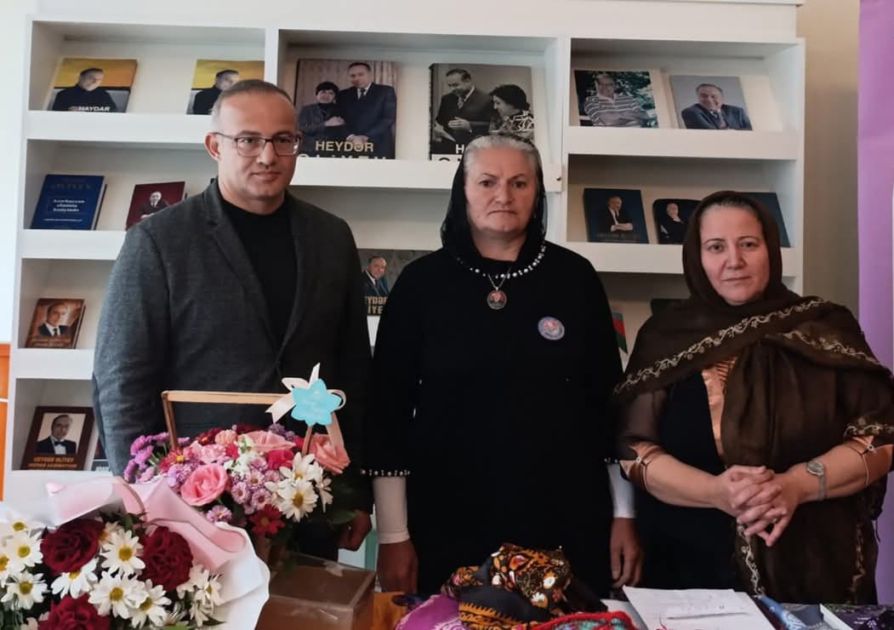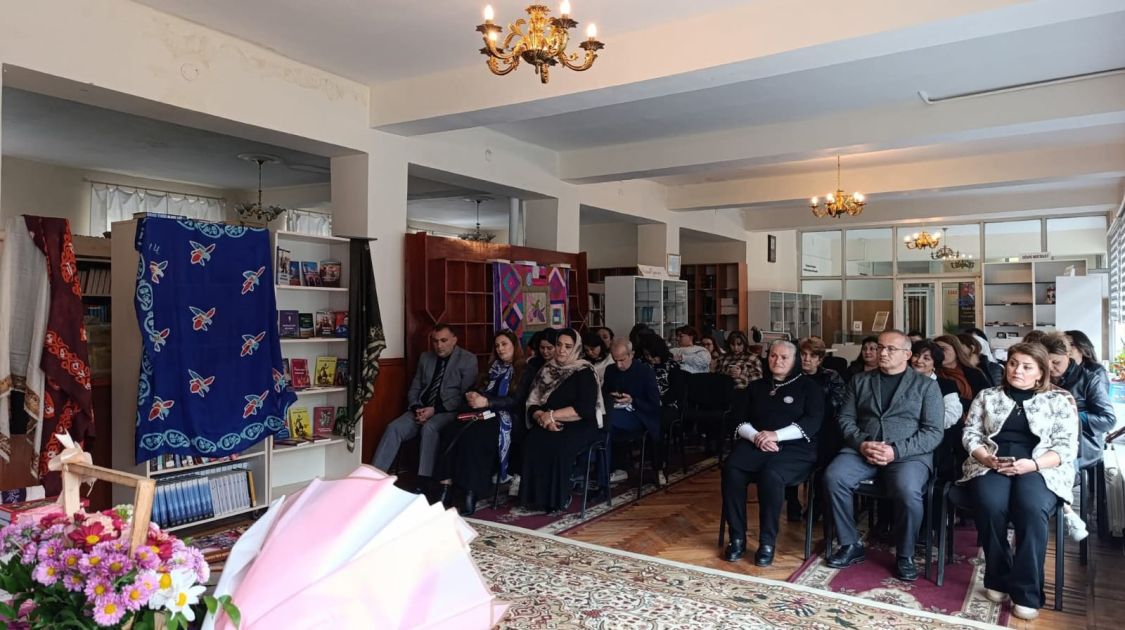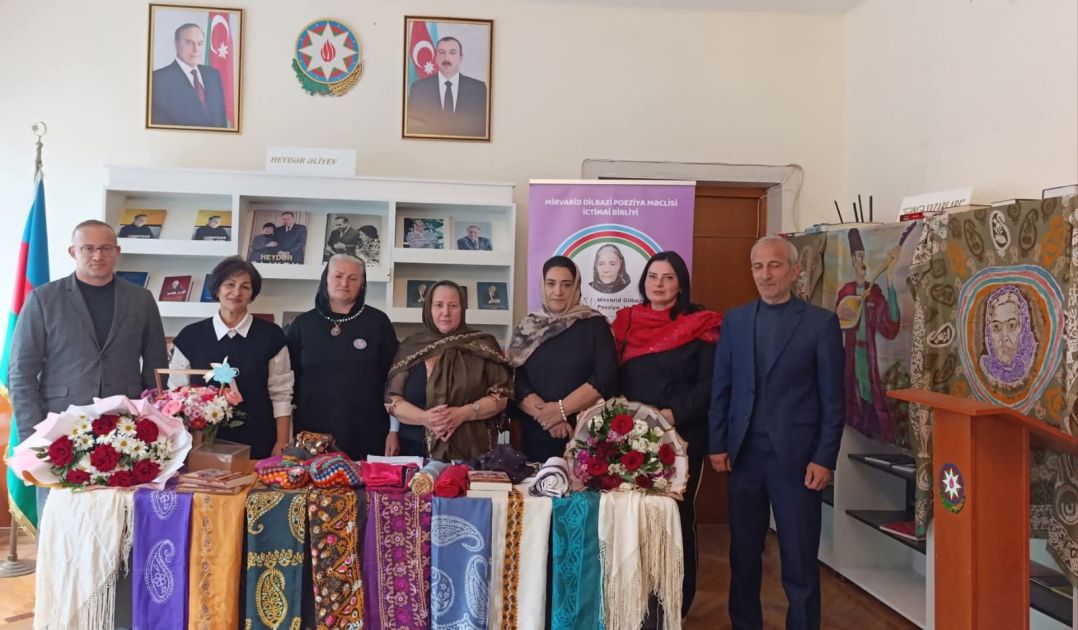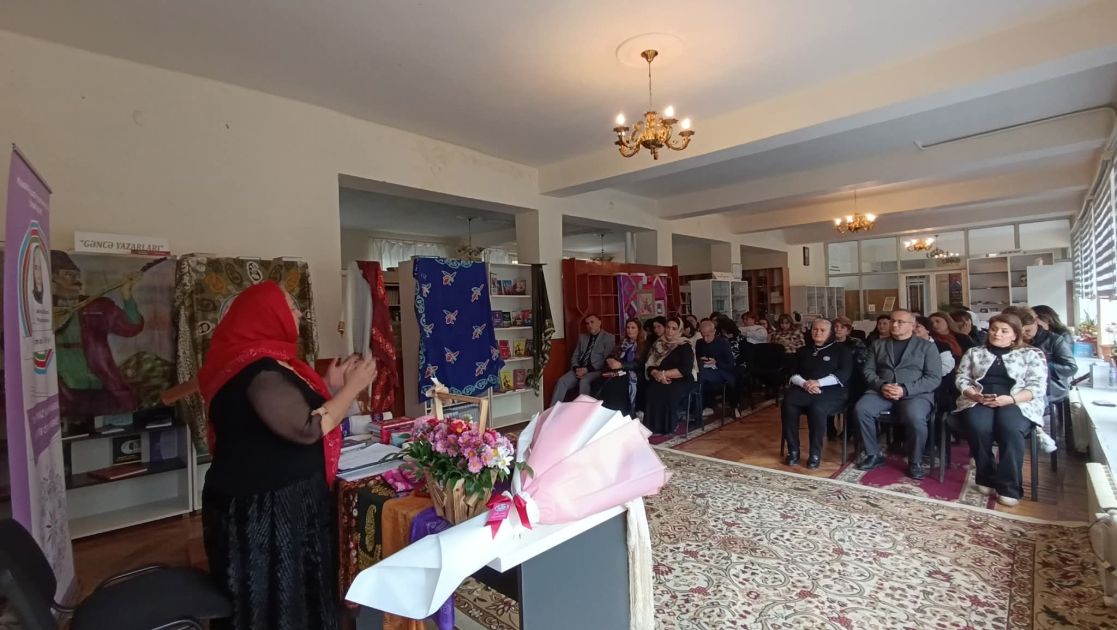New book presented within Kelaghayi Days project [PHOTOS]
![New book presented within Kelaghayi Days project [PHOTOS]](https://www.azernews.az/media/2025/11/14/egrthtyh4.jpg)
The presentation of Vagif Osmanli's book "Sazın, sözün kəlağaylı Güllüsü" has been held within the framework of the "Kelaghayi Days – 2025" project, organized by the Mirvarid Dilbazi Poetry Assembly Public Union and the Ganja City Centralized Library System, Azernews reports.
The event began with a minute of silence in honor of the martyrs.
Speaking at the event, the chairperson of the Mirvarid Dilbazi Poetry Assembly Public Union, poet and publicist Gullu Eldar Tomarli, provided detailed insight into the purpose and content of the gathering.
Vice-President of the Javad Khan History and Culture Foundation, Muzadil Hasanov, stressed the importance of preserving, promoting, and passing on national and spiritual values to future generations:
"For years, the National Pasture Festival we have organized has been a service to our cultural heritage, a platform where our customs and traditions are displayed. It is important that we remain united and supportive of each other on this path," he said.
Fakhri Akifoglu, head of the AF Carpet House, presented a valuable exhibit to the Kelaghayi Home Museum.
Kelaghayi designer Elnara Akhundova, poets Malak Ismayil and Seadet Qarib, as well as martyr Rashad Alakbarov's mother, Naila Alakbarova, also spoke about the significance of the book.
Note that November 26 is celebrated as Kelaghayi Day in Azerbaijan. In connection with this occasion, a Kelaghayi Festival will be held at the Rashid Behbudov State Song Theater.
For Azerbaijani women, the traditional silk headscarf known as kelaghayi has long been an essential part of their wardrobe.
More than just a fashion item, kelaghayi offers protection from the elements, keeping cool in summer and warm in winter thanks to the natural properties of silk.
Kelaghayis come in a wide variety of colors, patterns, and styles, each adding a unique flair to the wearer's look. The most iconic motif used in kelaghayi design is the buta, a flame-shaped, twisted teardrop that symbolizes divine fire, a sacred element in Azerbaijan since ancient times. The scarf’s borders and sometimes the central area (known as khoncha) are adorned with geometric and plant-based (nabati) patterns.
Each region in Azerbaijan has its own distinctive style of kelaghayi. For example, the Shah buta, buta, and khirda buta designs are typical of kelaghayis from Shaki and Basgal.
Beyond its aesthetic appeal, the kelaghayi holds deep cultural significance. There are many rich traditions tied to this exquisite headscarf.
Young unmarried girls typically wore bright-colored kelaghayis shades like yellow, pink, gold, or purple, while older women favored darker tones.
As part of engagement customs, once a girl agreed to a proposal, a woman from the groom's family would present her with jewelry wrapped in a red kelaghayi.
During the henna night of a wedding, the bride's head was covered with a kelaghayi before henna was applied to her hands and feet. Grooms and their closest friends also wore kelaghayis around their necks and tied them to the wedding car's mirror as part of the celebration.
One of the most cherished wedding traditions involved gifting trays brought by women attending the ceremony, often included a kelaghayi, considered the most precious item. In some regions, this custom still lives on.
Azerbaijan has been renowned as a hub of kelaghayi production for centuries. Cities like Tabriz, Ganja, Shamakhi, Shaki, and Nakhchivan were once famed for producing high-quality silk scarves.
Among them, Basgal, a picturesque village near Shamakhi remains the most celebrated. It is home to the Silk Center and the Kelaghayi Museum, where visitors can explore the history and craftsmanship behind this traditional art form.
Shaki, another major center, was known as the heart of Azerbaijan's silk industry and once housed the world's largest silk factory in the 19th century.
Even today, Basgal continues to produce the most valuable kelaghayis, typically ranging from six to seven exclusive designs.
The creation of a kelaghayi is a highly intricate process, requiring the collaboration of skilled artisans, including tailors, fabric dyers, pattern designers, and ornament artists. Weighing just 125 grams, each scarf takes about two days to dye and decorate.
In modern times, the ancient kelaghayi has found new life in the global fashion scene.
Designers around the world draw inspiration from its vibrant patterns and cultural symbolism. Visitors can admire these stunning silk scarves not only at the Kelaghayi Museum in Basgal but also in national museums across Azerbaijan.
Here we are to serve you with news right now. It does not cost much, but worth your attention.
Choose to support open, independent, quality journalism and subscribe on a monthly basis.
By subscribing to our online newspaper, you can have full digital access to all news, analysis, and much more.
You can also follow AzerNEWS on Twitter @AzerNewsAz or Facebook @AzerNewsNewspaper
Thank you!

